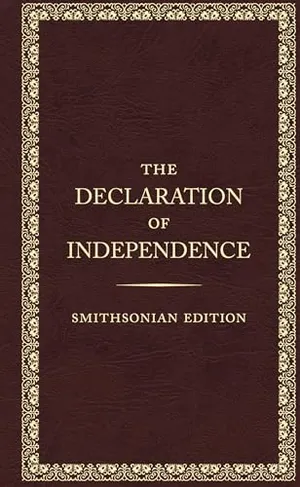The Paradox of the Declaration of Independence
The Smithsonian’s secretary offers insight into one of the nation’s most important documents
:focal(800x625:801x626)/https://tf-cmsv2-smithsonianmag-media.s3.amazonaws.com/filer_public/ab/2a/ab2a603e-aef0-4846-b78f-2348592f7922/thomas_jeffersons_desk.jpg)
Smithsonian's National Museum of American History
In response to the massive debt resulting from the Seven Years War with France and Spain years earlier, Great Britain’s increasingly draconian measures to tax the American colonies incited the Revolutionary War and turned sentiment toward becoming a sovereign nation. On June 7, 1776, the second Continental Congress, the colonies’ representative body, was in session. Virginia’s Richard Henry Lee offered the first proposal for independence from British rule, submitting a resolution that “all political connection is, and ought to be, dissolved.” A committee of five members— John Adams, Benjamin Franklin, Roger Sherman, Robert Livingston, and Thomas Jefferson—was appointed to draft a statement making the case for independence. Writing the initial draft of the declaration was assigned to Jefferson, just thirty-three at the time.
His draft was reviewed and edited by Adams and Franklin, with the Congress making final revisions after submission by the committee. The final Declaration of Independence is one of the most important documents in our nation’s history. What most resonates thanks to Jefferson’s lyrical eloquence is the preamble, encapsulating everything about American democracy that we cherish: equality, inherent rights, and the notion that the power of government derives from the consent of the people.
Years later, Jefferson would write to Lee that he hoped his words were an “expression of the American mind,” that is, that he had captured the people’s voice in this pivotal document. The language he used was steeped in Enlightenment principles—John Locke’s identification of inalienable natural rights such as life, liberty, and property; Charles Montesquieu’s belief in a system of checks and balances; and Jean-Jacques Rousseau’s assertion that the people have the right of self-governance. These ideas greatly influenced the founders’ views on how a new nation could best serve its citizens.
The Declaration of Independence, Smithsonian Edition
This elegant edition captures a defining document of independence in the US that represents the ideals of the nation.
/https://tf-cmsv2-smithsonianmag-media.s3.amazonaws.com/filer_public/22/4d/224d0d43-72d8-4e7d-9eb2-9f8a4343d75d/jefferson.jpg)
Jefferson was a living embodiment of that contradiction. He included an anti-slavery passage in the Declaration (excised from the final version to appease slaveholding colonies) aimed at King George III, writing, “He has waged cruel war against human nature itself, violating its most sacred rights of life and liberty in the persons of a distant people who never offended him, captivating and carrying them into slavery in another hemisphere.” Despite that sentiment, it did not stop Jefferson from enslaving people. Nor did it convince him to free more than two of the approximately six hundred slaves he owned during his lifetime.
Despite the Declaration of Independence’s unequal application during the nation’s history, it has been a constant beacon illuminating the promise of our nation. Its words challenge us to make real the aspirations of equality and justice by defending civil rights and eliminating the obstacles to the ballot box that continue to undermine democracy. If we are to embrace the Declaration’s core principle of a government of the people, by the people, and for the people, we must require our leaders to live up to its spirit by ensuring that the benefits of democracy accrue to all Americans.
Abraham Lincoln recognized the power of the Declaration of Independence, crediting it with being the foundation of his political philosophy. In an 1858 speech in Lewistown, Illinois, he urged the audience to “Think nothing of me—take no thought for the political fate of any man whomsoever—but come back to the truths that are in the Declaration of Independence.” Lincoln recognized that, although it was not a legal document like the Constitution, its moral clarity is timeless. The Declaration of Independence is a roadmap to what kind of nation we want to be. And it is a powerful reminder of the enduring worth of securing liberties and equality for all.
The Declaration of Independence, Smithsonian Edition is available from Smithsonian Books. Visit Smithsonian Books’ website to learn more about its publications and a full list of titles.
Excerpt from The Declaration of Independence, Smithsonian Edition, Introduction © 2022 by Smithsonian Institution
A Note to our Readers
Smithsonian magazine participates in affiliate link advertising programs. If you purchase an item through these links, we receive a commission.

